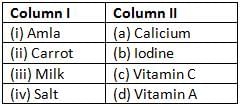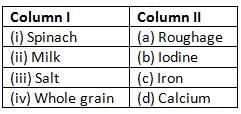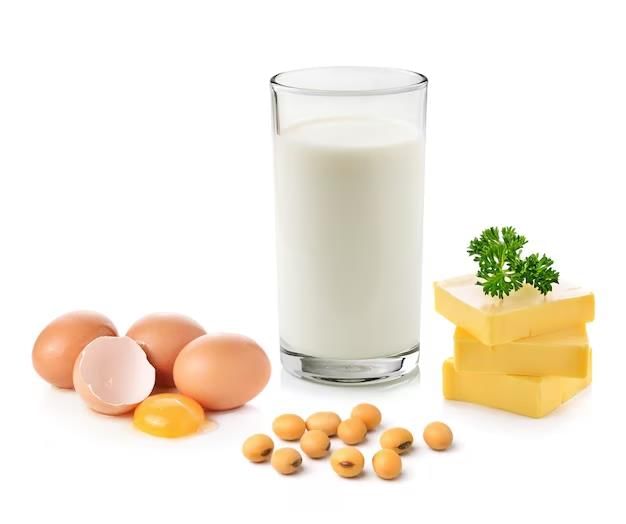Olympiad Test: Components of Food - Class 6 MCQ
20 Questions MCQ Test Science Olympiad Class 6 - Olympiad Test: Components of Food
Which mineral is essential for strong bones and teeth?
Which of the following statements is/are correct with regard to our diet?
Priya placed two drops of a liquid on cooked rice which turned the rice blue- black. What could be the liquid?
Match the following vitamins and minerals with their sources.

Which one of the following Vitamins deficiency leads to bleeding of gums, slow healing of wounds and aching limbs?
Which of the following vitamins and their deficiency disease is NOT correctly paired?
Which of the following nutrients is called “energy giving food”?
The food items given below belongs to which of the following groups?
Beans, Peas, Pulses and Meat
White of an egg turns violet when two drops of copper sulphate and ten drops of caustic soda are added to it. This indicates the presence of which of the following components of food?
Which of the following vitamins are produced in our body when exposed to sunlight in the morning?
Which of the following food components is present in banana?
Match the following pairs and choose the correct answer.

Which of the following vitamins is lost by heating?
Which of the following is a fat free and rich source of Vitamin A?
Which of the following symptoms is shown by a person whose diet is deficient in proteins?
Which of the following vitamins is present in the given substances?

Which of the following classes of food is present in pulses?
|
48 videos|116 docs|89 tests
|














